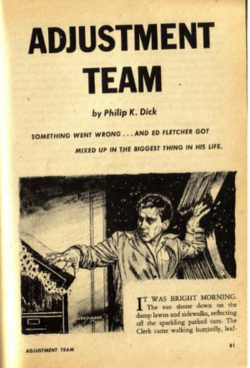In October of last year, the Illinois Supreme Court entered
an order amending several of the Rules of Professional Conduct, effective as of
January 1, 2016. This post and several following posts will examine the changes
to the Rules, and will offer thoughts about how lawyers can best understand the
changes and incorporate them into their practices.
Rule 1.1 has not actually changed at all. Moving on! Next
post! Boy, resuming blogging is easy-peasy – but no, that won’t work, because
it’s the comments that have changed. Two new comments have been added, and they
are substantial.
They fall under the heading of “Retaining Or Contracting With
Other Lawyers,” and in the first place it’s interesting that this concept –
once considered most fully as part of Rule 1.2(e) and Rule 1.5 – is now
presented as a matter involving competence. Rule 1.2(e) has always prohibited,
and continues to prohibit, delegating work to a lawyer outside one’s own firm
without the client’s informed consent. The reason for thinking about this as a
competency issue can be found in the text of new comment 6, which indicates
that the decision to retain other lawyers to work on a matter “must” be
grounded in the lawyer’s reasonable belief that “the other lawyers’ services
will contribute to the competent and ethical representation of the client.”
Note: “must.” I do not ordinarily view comments to rules as
requiring anything, strictly speaking; they are usually interpretive, not
proscriptive. But for a “must” to appear in a comment is telling. The Court is
may be signaling that while this topic is perhaps too mutable to support a full
Rule, the concept here is nonetheless important for lawyers to consider and
incorporate.
That concept is:
don’t associate loosely. If you really can’t handle a matter on your
own, and you need to associate with others in order to do it competently and
ethically, then do that; but do it carefully, and with the client’s informed
consent. That last part is not part of the “must” – the comment says the lawyer
“should ordinarily” obtain informed consent to associate with other lawyers on
a matter. Prudence and good risk management would push you this way anyway, but
for the Court to include it in a comment indicates a special level of import
even if it’s not an imperative.
Does that mean you have to have the client sign off in
writing on the agreement with the other lawyers? The Rule and comments don’t
say that, but think of it this way: they do, together, require “consult[ation]
with each other and the client about the scope of the[ lawyers’] respective
representations and the allocation of responsibility among them.” They point
out several factors by which the reasonableness of the decision to involve
other lawyers will be judged: “the education, experience and reputation of the nonfirm lawyers; the nature of the services assigned to the nonfirm lawyers; and the legal protections, professional conduct rules, and
ethical environments of the
jurisdictions in which the services will be performed, particularly relating
to confidential information.”
What does all that tell
you? That the reasonableness of the decision to involve other lawyers can and will be judged, and if it is,
you’d better be able to show why and how you made that decision. You’d better
be able to counter a suggestion or allegation that the client didn’t know what
was going on when the decision was made. The best way to do that is with a
contemporaneous writing. I wouldn’t say that that writing has to set out
everything in the world – “the education, experience, and reputation of the
nonfirm lawyers” is probably too much to go into when the client very likely
has more pressing concerns. But the division of responsibility, the expression
of a commitment by all the lawyers to keep confidences: these are good things
to make a client aware of, and to do so helps to prevent misunderstandings in
the present or down the road.
Former Comment 6, now
Comment 8: much digital ink has been spilled on this one, but it’s now an
official part of the Illinois ethics canon too. The concept of competence now
includes keeping abreast of “changes
in the law and its practice,
including the benefits
and risks associated with relevant technology.”
Like most comments, this
one takes us back out of the realm of “must” and leaves us with a “should.” So
what can you do to comply? Coming up with a bullet-point list about how to grok
the “benefits and risks” of something as expansive as “technology” is a bit
like trying to tell a stranger on the Internet about some sort of popular music
or other, as I think the old saw goes, unless I’m getting it mixed up, which I
very well may be. I’d like to address the issue by working technological
concepts in to the other discussions of amended Rules I’ll be posting here,
thinking about how developments in technology can assist us as we adapt along
with the Court.

